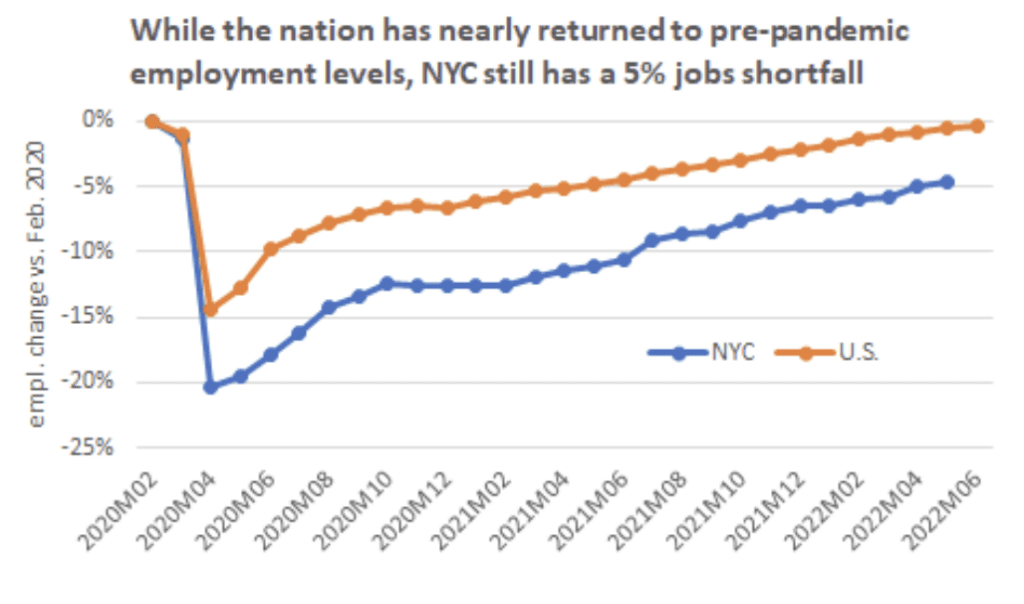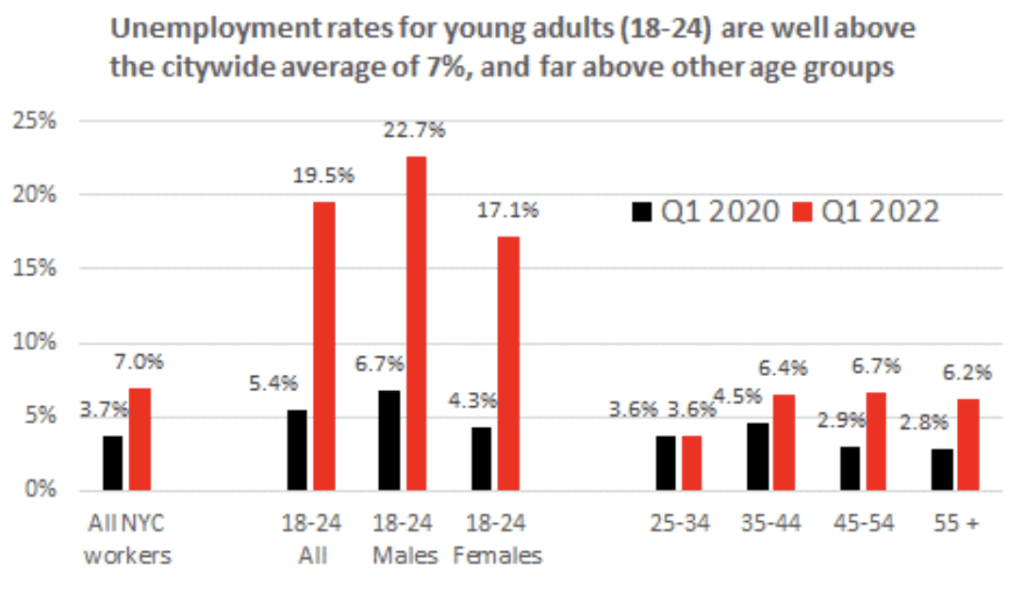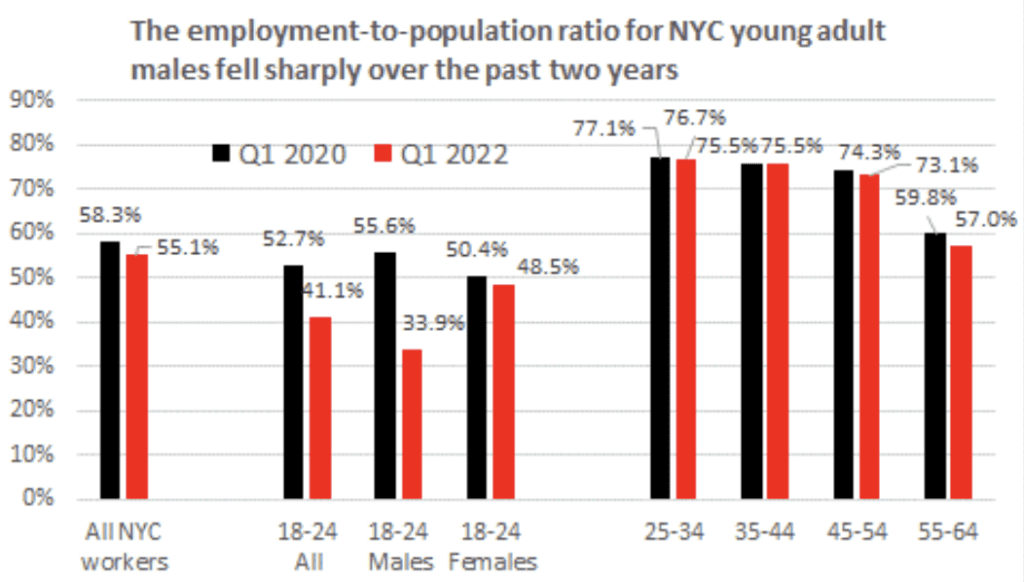New York City’s young adults are bearing the brunt of the pandemic jobs displacement; the employment rate for young men plunges to 34 percent
COVID-19 Economic Update is part of a regular biweekly Covid-19 Economic Update series prepared by economist James Parrott of the Center for New York City Affairs. Read past installments here.
The latest jobs data show that while the United States is very close to reclaiming its pre-pandemic total employment level, as of May, New York City still had nearly a five percent pandemic-era jobs deficit. This means a shortfall of 220,000 jobs. While this shortfall is less than a quarter of the what it was back in April of 2020, it is nearly as bad as the low-point in the early 2000s recession (-6 percent), and much greater than the low-point reached during the 2008-09 Great Recession (-3.5 percent).

A growing number of industries like warehouses, temp agencies, home health care, and tech are adding jobs above their pre-pandemic levels, several face-to-face industries are still operating at a fraction of their pre-Covid level, e.g., May’s employment level in arts, entertainment, and recreation was 77 percent of the February 2020 level, and employment in hotels and food services was 83 percent of the pre-pandemic level. Overall, the face-to-face industries now account for 96 percent of New York City’s pandemic job loss.
This, of course, means that young adults (ages 18-24), who were heavily concentrated in the face-to-face industries at the time of the pandemic, have been hard hit by the continuing jobs shortfall. Given that their presence in the restaurants and retail trade was more than twice as great as in the economy overall, the likelihood that a young worker was still displaced as of May was 42 percent greater than the average for all workers.
The disproportionate impact on young workers is resoundingly evident in the wide disparity in unemployment rates by age group shown in the chart below. While New York City’s unemployment overall stood at seven percent in the first quarter of this year, it was nearly three times that for young adults, 18-24. Unemployment was 19.5 percent for young adults overall, with males experiencing nearly 23 percent unemployment and young women, 17 percent. For workers 25-34, unemployment dropped back to 3.6 percent in the first quarter, the same as in the pre-pandemic first quarter two years previously. For the other age groups shown in the chart, unemployment averaged between 6.2 and 6.7 percent, less than a third of the young adult unemployment.

Even more telling, and alarming, than the sharp rise in the unemployment rate among young men, is the steep drop in the employment rate (also referred to as the employment-to-population ratio or EPOP) for young men. In the first quarter of 2020, 55.6 percent of all males 18-24 in New York City were employed. Two years into the pandemic, the young male EPOP had fallen to 33.9 percent, as the chart below demonstrates. Thus, only about one in every three young men in the city were working. The EPOP for young women also declined but only to 48.5 percent in the first quarter of 2022 from 50.4 percent in the pre-pandemic quarter of 2020.

New York City’s experience for young men contrasts sharply with the national level where the EPOP for young men declined from 61.4 percent in the first quarter of 2020 to 60.8 percent in the first quarter of 2022. This dramatic disparity involving New York City’s young males warrants a further investigation.
There is some disparity in the overall EPOP between the city and the nation, but it is not nearly as stark as among young men. For all workers in the nation overall, the EPOP slipped from 60.7 percent to 59.9 percent between the first quarters of 2020 and 2022, while in New York City, the EPOP declined more perceptibly from 58.3 percent to 55.1 percent.
# # #
